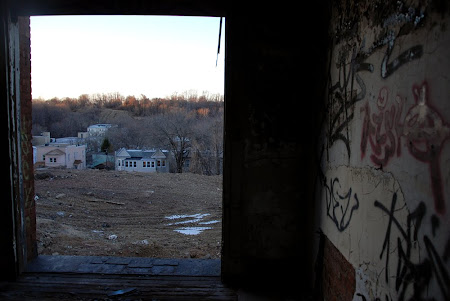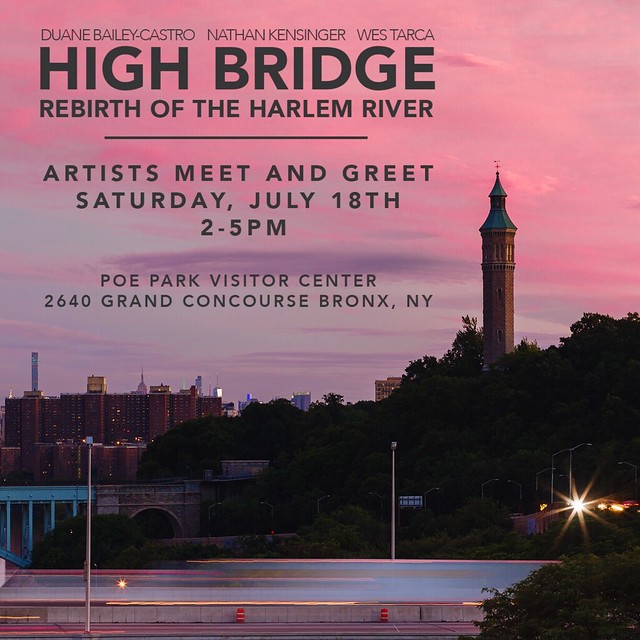Chemical Lane, Staten Island

January 31, 2012 -
The Arthur Kill - a tidal strait dividing Staten Island and New Jersey - is one of the most abused waterways in New York City. Its salt water marshes and fresh water wetlands have been used for over a century as an enormous dumping ground, and it has been poisoned by raw sewage and oil spills. After decades of heavy use, its shoreline in western Staten Island is now a series of post-industrial wastelands. Traveling south down the Arthur Kill, these include the demapped streets of Bloomfield's oil tanker fields, the unnatural hills of the Fresh Kills Landfill, the moldering wrecks of the Rossville boat graveyard, and the abandoned LNG gas tanks at Chemical Lane. All of these wastelands face New Jersey's infamous Chemical Coast, located just across the Kill.
Today, the New York City Economic Development Corporation (NYEDC) is planning to redevelop a section of Staten Island's polluted, abandoned coastline. It is offering up "the largest New York City-owned property available for maritime development," according to the Staten Island Advance, with "2,000 linear feet of shoreline along the Arthur Kill." This 33-acre lot is located at the foot of Chemical Lane, a desolate half-paved road that dead-ends in the Kill. The property is an overgrown wilderness, with dirt paths leading to several collapsing piers, and is part of a much larger abandoned industrial complex which includes the LNG gas tanks, a neighborhood landmark still considered to be "Staten Island’s most complex and ambitious project," according to the Staten Island Advance. These tanks have sat empty for over 30 years while nature has reclaimed the area, and in many ways, the clash between haphazard development and encroaching wilderness on Chemical Lane illustrates the troubled relationship that Staten Island has with the Arthur Kill.
The neighborhood around Chemical Lane was once a rural wilderness. "Twenty years ago, it was like upstate around here,” one neighborhood resident told the NY Times. “It was all woods. The old guys tell me they used to walk down the road with a gun and hunt." Today, much of that wilderness has been paved over by development or put to unnatural use. Chemical Lane currently houses a random assortment of businesses that are bluntly at odds with nature, including a golf range where you can tee off into the Arthur Kill, a topsoil company piled onto a muddy open plain, and a paintball field set up in a plastic-coated forest. Bordering these businesses are a prison which was built in 1976 and closed down this year, and a maritime scrapyard.
Chemical Lane's most visible structures, its towering gas tanks, were completed in 1975. "The 10-story tanks, which are 250 feet in diameter, have steel roofs and concrete walls 10 feet thick," according to the NY Daily News, and "were built to store liquefied natural gas safely, even if they were struck by a 747." Upon completion, they were "heralded as the world’s largest" liquefied natural gas (LNG) containers, according to the Staten Island Advance. But despite their monumental size and cost, the tanks were never used, due to safety concerns from the nearby community. They now sit abandoned, slowly rusting, covered in graffiti, and ringed by a dark forest littered with mattresses, boats, and abandoned buildings.
Over the years, wildlife displaced from new development near Chemical Lane has found a home at the abandoned LNG gas tank property. A herd of deer wanders freely through the new-growth woods and hawks soar overhead. The property is also home to woodchucks, an owl and a muskrat, according to Puma Ghostwalker, a naturalist who works in the area. Puma, who recently rescued a baby deer stranded in the oil tanks' overgrown concrete canal system, is raising a bee colony nearby and has planted billions of wildflowers at the end of Chemical Lane, in an attempt to encourage the return of nature to this blighted area.
The NYEDC is now evaluating the proposals it has received for its property near Chemical Lane. Despite the looming reminder of the abandoned LNG oil tanks, it is "particularly eager to expand industrial maritime activity along the Arthur Kill," according to the Metropolitan Waterfront Alliance, as part of "a long-range plan called Working West Shore 2030" which calls for "20,000 new jobs in the West Shore over the next 20 years." There is no mention of deer, muskrat, bees or wildflowers in the West Shore plan, raising serious questions about what the ideal future for Chemical Lane should be. The city's main hope for the property, according to the NY Times, is to build "a new home for the sanitation department’s garage."
---
For more photo essays from the Arthur Kill, please visit Bloomfield, Staten Island (2011) and Fresh Kills (2009).














































